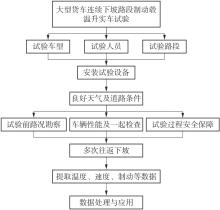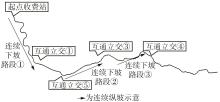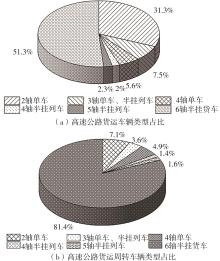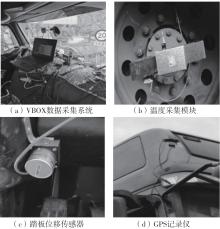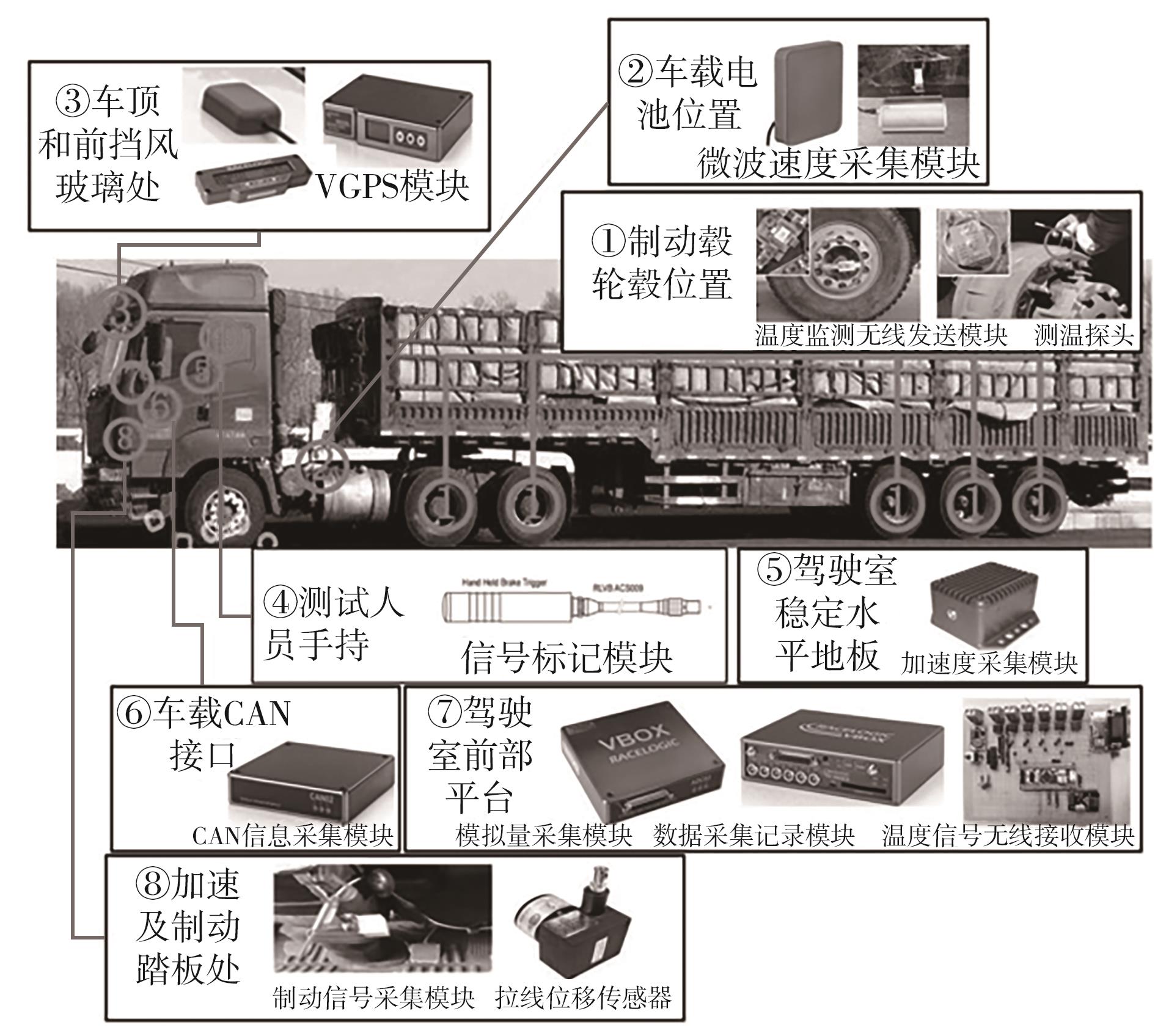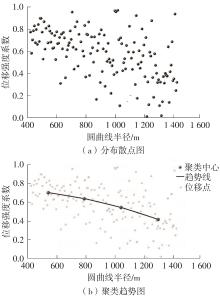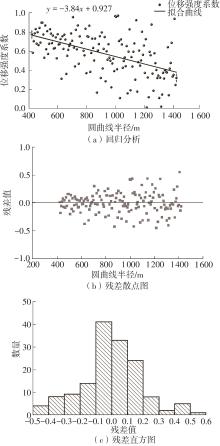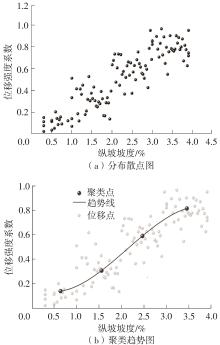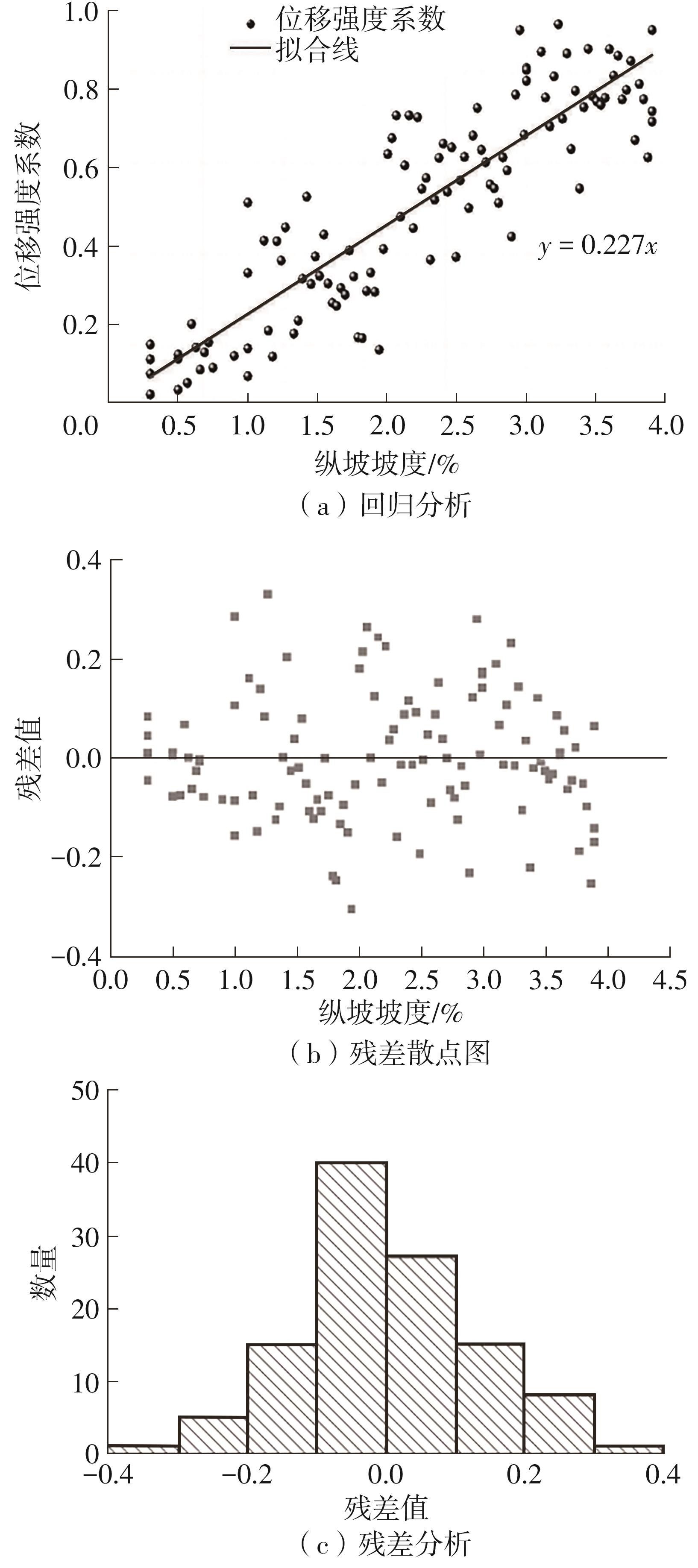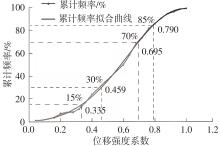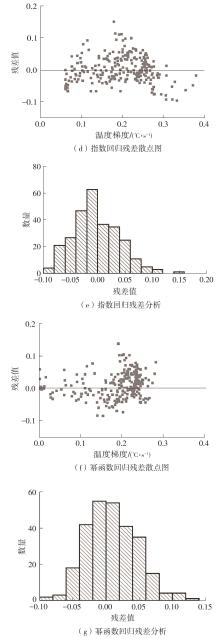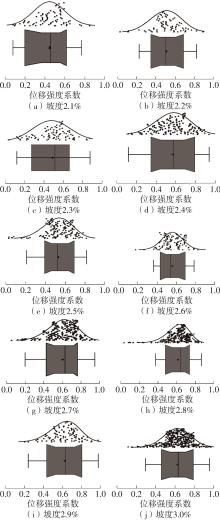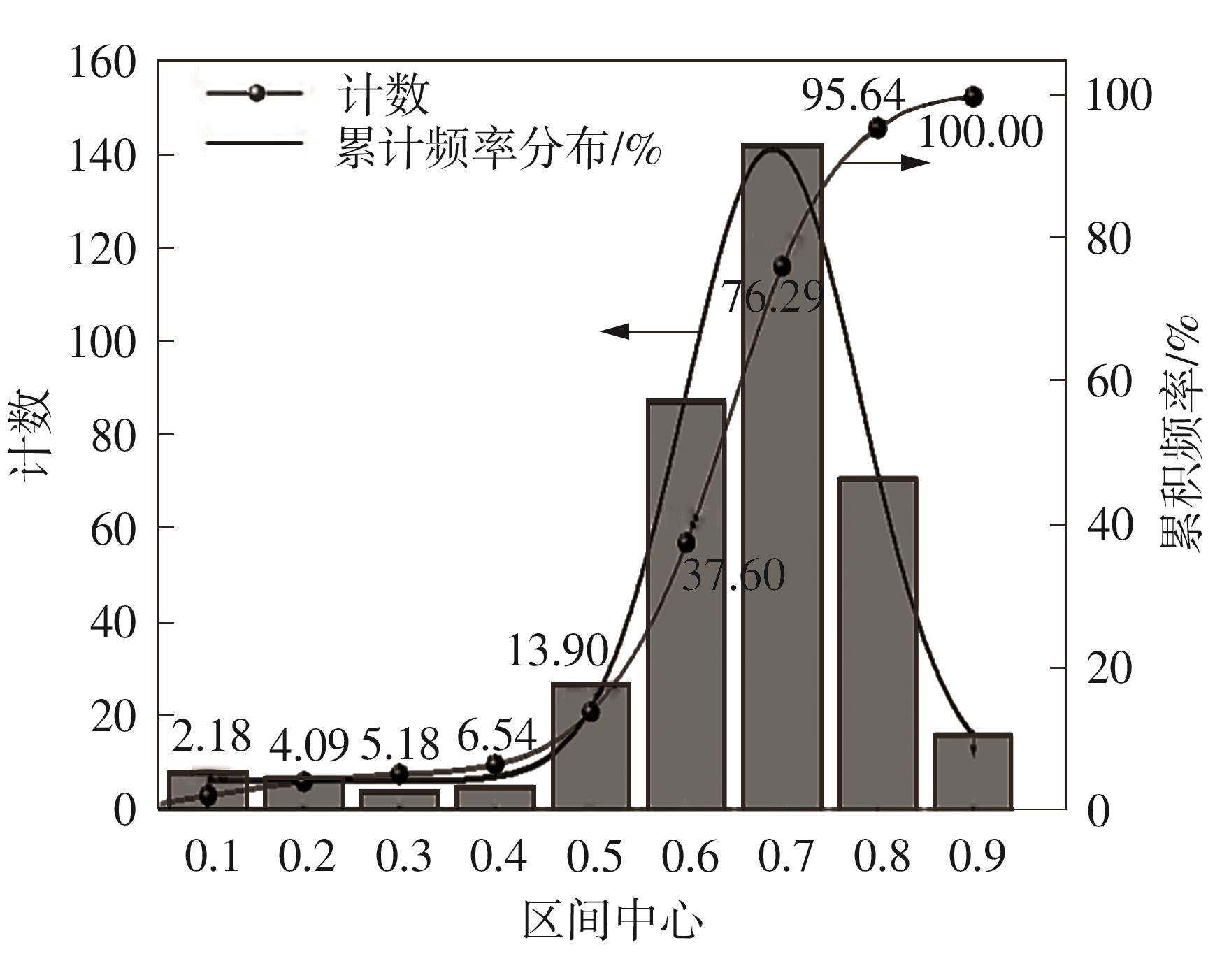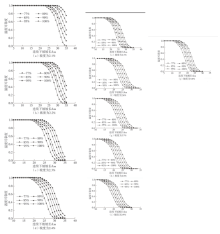Journal of South China University of Technology(Natural Science Edition) ›› 2025, Vol. 53 ›› Issue (2): 12-26.doi: 10.12141/j.issn.1000-565X.230674
• Traffic Safety • Previous Articles Next Articles
Research on Average Longitudinal Slope Length of Expressway Based on Braking Behavior
ZHANG Chi1, GUO Tingyu1, HU Ruilai2, GAO Yanyang1, ZHOU Yuming1
- 1.School of Highway,Chang’an University,Xi’an 710064,Shanxi,China
2.Broadvision Engineering Consultants Co. ,Ltd. ,Kunming 650041,Yunnan,China
-
Received:2023-10-28Online:2025-02-25Published:2025-02-03 -
About author:张驰(1981—),男,博士,教授,主要从事交通安全与道路数字化研究。E-mail: zhangchi@chd.edu.cn -
Supported by:the National Key R & D Program of China(2020YFC1512005);the Natural Science Basic Research Project of Shaanxi Province(2023-JC-YB-391);the Key R & D Projects of Shanxi Province(202102020101014)
CLC Number:
Cite this article
ZHANG Chi, GUO Tingyu, HU Ruilai, GAO Yanyang, ZHOU Yuming. Research on Average Longitudinal Slope Length of Expressway Based on Braking Behavior[J]. Journal of South China University of Technology(Natural Science Edition), 2025, 53(2): 12-26.
share this article
Table 8
Simulated critical slope lengths for each slope at reliability 0.95"
| 平均坡度/% | 临界坡长/km | |||||
|---|---|---|---|---|---|---|
| 77%1) | 80%1) | 85%1) | 90%1) | 95%1) | 100%1) | |
| 2.1 | 33.06 | 31.76 | 30.12 | 28.88 | 25.97 | 24.56 |
| 2.2 | 30.98 | 29.02 | 27.67 | 24.86 | 23.67 | 22.48 |
| 2.3 | 28.32 | 26.87 | 25.12 | 23.34 | 21.79 | 20.46 |
| 2.4 | 25.39 | 23.81 | 22.75 | 20.45 | 19.76 | 18.83 |
| 2.5 | 22.03 | 21.74 | 20.18 | 18.83 | 17.75 | 16.97 |
| 2.6 | 20.49 | 19.73 | 18.92 | 17.76 | 16.93 | 15.87 |
| 2.7 | 19.92 | 18.98 | 18.04 | 17.13 | 15.97 | 14.91 |
| 2.8 | 19.00 | 17.89 | 17.25 | 15.97 | 14.72 | 13.76 |
| 2.9 | 17.99 | 16.88 | 15.97 | 14.93 | 13.94 | 12.68 |
| 3.0 | 16.85 | 15.77 | 14.95 | 13.79 | 12.90 | 11.74 |
| 1 | 史培龙,刘瑞,余强,等 .重型货车坡道运行安全监控系统[J].科技导报,2015,33(4):104-110. |
| SHI Peilong, LIU Rui, YU Qiang,et al .Safety monitoring system for heavy duty vehicles running on rampway [J].Science & Technology Review,2015,33(4):104-110. | |
| 2 | 公路路线设计规范: [S]. |
| 3 | MACADAM C .Understanding and modeling the human driver[J].Vehicle System Dynamics,2003,40(1):101-158. |
| 4 | DELAIGUE P, ESKANDARIAN A .A comprehensive vehicle braking model for predictions of stopping distances[J].Journal of Automobile Engineering,2004,218(12):1409-1417. |
| 5 | 王雪松,朱美新,陈铭 .驾驶员前向避撞行为特征的降维及多元方差分析[J].同济大学学报(自然科学版),2016,44(12):1858-1866. |
| WANG Xuesong, ZHU Meixin, CHEN Ming .Dimension reduction and multivariate analysis of variance for drivers’ forward collision avoidance behavior characteristics [J].Journal of Tongji University(Natural Science),2016,44(12):1858-1866. | |
| 6 | 吴斌,朱西产,沈剑平 .基于自然驾驶数据的驾驶员紧急制动行为特征[J].同济大学学报(自然科学版),2018,46(11):1514-1519,1535. |
| WU Bin, ZHU Xichan, SHEN Jianping .Driver emergency braking behavior based on naturalistic driving data [J].Journal of Tongji University(Natural Science),2018,46(11):1514-1519,1535. | |
| 7 | 李霖,贺锦鹏,刘卫国,等 .基于驾驶员紧急制动行为特征的危险估计算法[J].同济大学学报(自然科学版),2014,42(1):109-114. |
| LI Lin, HE Jinpeng, LIU Weiguo,et al .Threat assessment algorithm based on characteristics of driver emergency braking behavior[J].Journal of Tongji University(Natural Science),2014,42(1):109-114. | |
| 8 | 刘瑞,贺经纬,朱西产,等 .基于自然驾驶数据的跟车场景潜在危险估计模型[J].东南大学学报(自然科学版),2019,49(4):788-795. |
| LIU Rui, HE Jingwei, ZHU Xichan,et al .Potential risk assessment model in car following based on naturalistic driving data[J].Journal of Southeast University (Natural Science Edition),2019,49(4):788-795. | |
| 9 | 张驰,孟良,汪双杰,等 .高速公路曲线路段小客车制动行为侧滑风险仿真分析[J].中国公路学报,2015,28(12):134-142. |
| ZHANG Chi, MENG Liang, WANG Shuangjie,et al .Sideslip risk simulation analysis of passenger car braking behavior on expressway curved sections[J].China Journal of Highway and Transport,2015,28(12):134-142. | |
| 10 | 徐进,汪旭,王灿,等 .山区公路纵坡段驾驶人脚操纵特征及驾驶负荷[J].中国公路学报,2018,31(1):91-100. |
| XU Jin, WANG Xu, WANG Can,et al .Foot manoeuvres and workload of driver on mountainous roads with longitudinal slopes[J].China Journal of Highway and Transport,2018,31(1):91-100. | |
| 11 | BLOOK H .The flash temperature concept[J].Wear,1963,6(6):483-494. |
| 12 | 苏波,方守恩,王俊骅 .基于大货车制动性能的山区高速公路坡度坡长限制研究[J].重庆交通大学学报(自然科学版),2009,28(2):287-289,297. |
| SU Bo, FANG Shouen, WANG Junhua .Research on longitudinal slope and slope length limit of mountain-expressway based on heavy vehicles’ braking ability [J].Journal of Chongqing Jiaotong University(Natural Science Edition),2009,28(2):287-289,297. | |
| 13 | OLESIAK Z, PYRYEV Y, YEVTUSHENKO A .Determination of temperature and wear during braking[J].Wear,1997,210(1/2):120-126. |
| 14 | MOOMEN M, KSAIBATI K .Updating the grade severity rating system(GSRS)for wyoming mountain passes:a description of tests and results[J].SAE International Journal of Commercial Vehicles,2020,13(1):71-85. |
| 15 | 杜博英,方守恩,迟爽,等 .货车制动在公路长大下坡安全研究中的应用[J].哈尔滨工业大学学报,2010,42(4):656-659. |
| DU Bo-ying, FANG Shou-en, CHI Shuang,et al .U-sing of truck braking in security research of long and steep downgrade on highway[J].Journal of Harbin Institute of Technology,2010,42(4):656-659. | |
| 16 | 贾伟 .制动器温升与山区道路参数及车辆工况关系研究[D].重庆:重庆交通大学,2012. |
| 17 | 张驰,侯宇迪,秦际涵,等 .基于制动毂温升的连续下坡安全设计方法[J].华南理工大学学报(自然科学版),2019,47(10):139-150. |
| ZHANG Chi, HOU Yudi, QIN Jihan,et al .Safety design method of long slope downhill slope based on temperature increase of brake[J].Journal of south China University of Technology(Natural Science Edition),2019,47(10):139-150. | |
| 18 | 潘兵宏,牛肖,白浩晨,等 .高速公路连续下坡路段货车制动毂温升模型修正研究[J].公路交通科技,2021,38(9):85-91. |
| PAN Binhong, NIU Xiao, BAI Haochen,et al .Study on temperature rise model of truck brake hubs on continuous downhill section of expressway[J].Journal of Highway and Transportation Research and Deve-lopment,2021,38(9):85-91. | |
| 19 | BEN-AKIVA M, HIRSH M, PRASHKER J .Probabilistic and economic factors in highway geometric design[J].Transportation Science,1985,19(1):38-57. |
| 20 | 杨晨,程建川 .基于可靠度的道路不设缓和曲线最小半径的计算[J].公路交通科技,2013,30(7):7-11. |
| YANG Chen, CHENG Jianchuan. Calculation of minimum circular radius of road without transition curve based on reliability[J].Journal of Highway and Transportation Research and Development,2013,30(7):7-11. | |
| 21 | 秦玉秀 .基于可靠性的道路行车视距分析和线形设计研究[D].南京:东南大学,2015. |
| 22 | 张航,涂智佳,田晟,等 .山区高速公路爬坡车道长度可靠性设计[J].武汉理工大学学报(交通科学与工程版),2022,46(3):495-500. |
| ZHANG Hang, TU Zhijia, TIAN Sheng,et al .Reliability design of climbing lane length of expressway in mountainous area[J].Journal of Wuhan University of Technology (Transportation Science & Enginee-ring),2022,46(3):495-500. | |
| 23 | 王路,程建川 .基于可靠度的高速公路准临界坡长[J].东南大学学报(自然科学版),2018,48(1):181-187. |
| WANG Lu, CHENG Jianchuan .Pre-critical grade length of expressway based on reliability[J].Journal of Southeast University(Natural Science Edition),2018,48(1):181-187. | |
| 24 | 刘斌,李刚,黄春富,等 .基于可靠度的地下互通立交匝道坡度指标研究[J].公路,2022,67(10):9-17. |
| LIU Bin, LI Gang, HUANG Chunfu,et al .Research on the slope index of underground interchange ramp based on reliability[J].Highway,2022,67(10):9-17. | |
| 25 | 工程结构可靠性设计统一标准: [S]. |
| [1] | ZHANG Yandi, HUI Bing, MA Ziye, LI Yuanle, WANG Hainian. Quantitative Method of Aggregate Spalling Degree of Chip Seal in Three Dimension [J]. Journal of South China University of Technology(Natural Science Edition), 2025, 53(2): 80-91. |
| [2] | ZHENG Zhi, GUO Naisheng, YOU Zhanping. Molecular Simulation of Interaction Behavior Between Asphalt Components and Waste Wood Oil [J]. Journal of South China University of Technology(Natural Science Edition), 2024, 52(12): 79-86. |
| [3] | WANG Wei, TAN Yiqiu, XU Yongjiang. Study on Internal Stress of Asphalt Mixture Under Three-Point Bending Mode [J]. Journal of South China University of Technology(Natural Science Edition), 2024, 52(10): 101-111. |
| [4] | LI Baijian, HUANG Yan, FU Xinsha. Influence of Shapes of Corrugated Steel Plate on Load-Carrying Capacity of Reinforced Concrete Slab Culvert and Arch Effect with Lateral Restraint [J]. Journal of South China University of Technology(Natural Science Edition), 2024, 52(1): 110-118. |
| [5] | DENG Manyu, YUAN Xingfei, DONG Yongcan. Study on Area-Loss Limit of Cable-Strut Structures Considering Different Failure Modes [J]. Journal of South China University of Technology(Natural Science Edition), 2024, 52(1): 52-61. |
| [6] | ZHAO Xiaomei, ZHU Xiangyuan, WANG Qin, et al. Operational Reliability Optimization Strategies of Multi-type Bus Lines [J]. Journal of South China University of Technology(Natural Science Edition), 2023, 51(8): 32-39. |
| [7] | MAO Xuesong, WANG Yueyue, WU Qian, et al. Structure Evolution Law of Soil-Rock Mixture Fillers with Different Gradations Under Seepage [J]. Journal of South China University of Technology(Natural Science Edition), 2023, 51(2): 65-75. |
| [8] | YU Bin, ZHANG Yuqin, WANG Yuchen, et al. Automated Extraction of Road Geometry Information Using Mobile LiDAR Point Cloud [J]. Journal of South China University of Technology(Natural Science Edition), 2023, 51(2): 88-99. |
| [9] | ZHANG Chi, REN Shipeng, WANG Bo, et al. Speed Characteristics and Prediction of Trucks on Long and Steep Downgrade Sections [J]. Journal of South China University of Technology(Natural Science Edition), 2022, 50(3): 38-49. |
| [10] | FU Guozhi, WEI Jincheng, ZHAO Yanqing, et al. Influence of Asphalt Pavements' Dynamic Effects on the Surface Acceptance Deflection [J]. Journal of South China University of Technology (Natural Science Edition), 2021, 49(4): 90-96. |
| [11] | JIANG Jihai DU Boran ZHANG Jian. Application and Technology Prospects of Hydrodynamic-Magnetic Compound Support for Axial Piston Pump [J]. Journal of South China University of Technology(Natural Science Edition), 2021, 49(2): 88-98,109. |
| [12] | WAN Yipin SONG Xuding YUAN Zhengwen. Fatigue Test and Fatigue Reliability Evaluation of Loader Working Device [J]. Journal of South China University of Technology (Natural Science Edition), 2020, 48(8): 108-114. |
| [13] | LIU Xiaoling, WANG Bing, HUANG Qiao, et al. Condition Assessment Model for Cable-Stayed Bridges Based on Evidence Reasoning Framework [J]. Journal of South China University of Technology (Natural Science Edition), 2020, 48(6): 69-76. |
| [14] | AI Changfa, HUANG Yangquan, LUO Liufen, et al. Estimation of Comprehensive Impact of External Factors on Interlayer Fatigue Life of Asphalt Pavement Based on ISS & SSDR [J]. Journal of South China University of Technology (Natural Science Edition), 2020, 48(5): 58-66,74. |
| [15] | SU Hailiang, LAN Fengchong, HE Yuyan, et al. Reliability Topology Optimization Design Based on Chebyshev Zero Polynomial Interval Uncertainty [J]. Journal of South China University of Technology (Natural Science Edition), 2020, 48(4): 54-64. |
| Viewed | ||||||
|
Full text |
|
|||||
|
Abstract |
|
|||||
